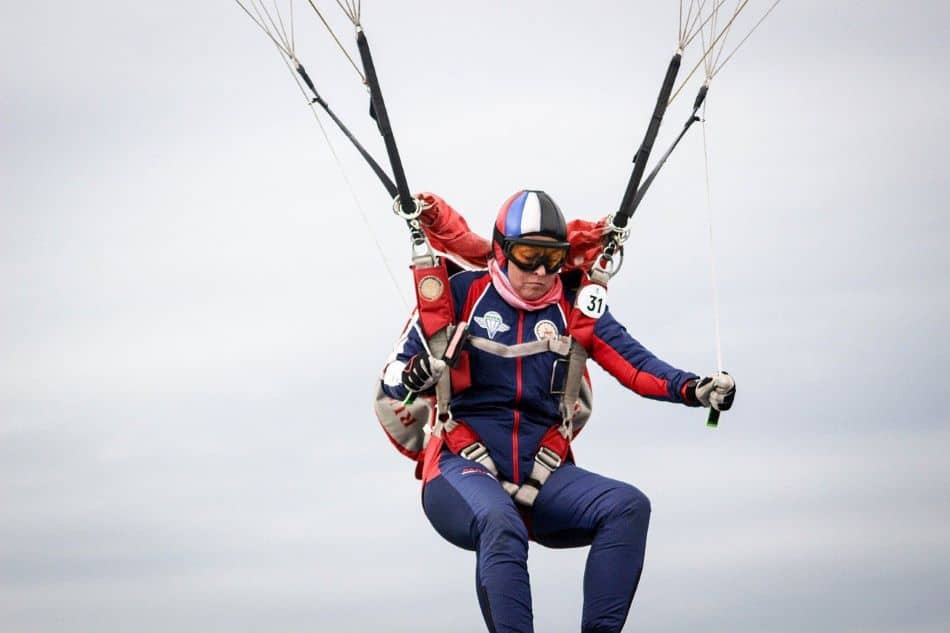
Do you want to experience the incredible thrill of going skydiving? You may be an adrenaline junky who is wondering if it’s possible to jump solo on your very first attempt. In this article, I’ll explore whether or not skydiving alone on your first jump is a feasible option.
It is not possible to skydive alone for your first jump. Only holders of the USPA ‘A’ license are allowed to jump alone. This rule is strictly followed by skydiving centers in the US, Europe, Australia, and many other countries.
Even though it might sound frustrating there are good reasons why it is not permitted to jump alone for the first skydive. In the following, I will explain the reasons for the certifications, the average duration until you can jump alone, and some unexpected ways to jump alone as early as possible.
Three Reasons Why Skydiving Alone on Your First Jump is Not Permitted
As a general rule, the USPA (United States Parachute Association) requires skydivers to have a skydiving A license because it increases the safety of the jumpers, ensures proper training and knowledge of the equipment, and protects skydiving centers against lawsuits.
Skydivers Need to Be Trained to Know How to Handle the Equipment
At first, it is important for novice skydivers to understand how to handle the equipment and how they need to behave prior to, during, and after the jump. This by itself is already a lot of skills and knowledge that a skydiver needs to acquire before he or she can make the first jump.
For example, novice skydivers need to learn
- how to properly put on and secure their harness, how to deploy their parachute, and how to control their descent once their parachute is open
- how to safely exit the aircraft, how to reach and maintain the correct body position during free fall, and how to monitor their altitude throughout the jump to ensure they deploy their parachute at the correct altitude
- how to properly land in the dropzone, how to handle changing weather conditions, and how to communicate with other jumpers
It is totally unrealistic to learn and master all this (and these are just a few examples) within a couple of hours. As a result, skydiving courses require that students are accompanied by two instructors during their first jump. The instructors jump next to the novice skydiver and can intervene in case of any emergencies.
Most people also do not want to learn too much before making their first jump. Why invest all the effort (and money) without even knowing if one likes skydiving? As a result, tandem skydiving is very popular and is part of every licensed course.
In tandem skydiving, you can complete the ground training within 30-60 minutes and then have a similar thrill of jumping. If you liked the experience, you can book a proper course and learn how to skydive solo.
Safety Is Increased for Novice and Experienced Skydivers
In the early days of skydiving, there were no standards for equipment or training, and many people attempted to skydive without proper instruction or experience. As a result, there were many accidents and fatalities in the sport.
Since the establishment of organizations like the USPA, which sets safety standards and provides training and certification programs, the safety of skydiving has greatly increased. This makes a lot of sense because the A license program is designed to instill a deep understanding of the risks involved in skydiving and to teach the jumper how to manage those risks effectively.
It also ensures that only skydivers that have demonstrated the necessary knowledge and skills to make safe and responsible decisions during their jump are allowed to jump. This does not only increase the safety for the jumper himself or herself but for fellow skydivers as well.
Are you curious about the odds of a double parachute failure during a skydive? Many people assume it’s an impossibility, but the truth may surprise you. Learn more in my blog post on the topic.
Skydiving Dropzones Are Protected Against Lawsuits
By requiring that individuals have a certain level of experience and training before jumping solo, dropzones can show that they have taken steps to ensure the safety of their customers. This can help protect them from liability in the event of an accident.
For example, if a skydiver who is not properly trained or licensed is injured or killed during a jump, their family may be more likely to bring a lawsuit against the dropzone. However, if the dropzone can show that they required the skydiver to have a certain level of training and experience, they may be able to argue that they did everything in their power to ensure the safety of the skydiver and are not at fault.
Exploring Your Options for Solo Skydiving: What You Need to Know
If you are frustrated by the USPA’s strict requirements, don’t worry – there are alternative options that can provide a similar experience. In the following, I explore a few ideas to help you scratch that itch while still ensuring your safety and the safety of those around you.
Indoor Skydiving Can Be Done Without a License
Your first option is to try indoor skydiving. Does this sound boring to you? Do not be mistaken, indoor skydiving is a fun experience that even expert skydivers often do to improve their free-falling technique and have some fun.
Indoor skydiving can be done by people of all ages and skill levels. Unlike traditional skydiving, it provides a safe and controlled environment where you can fly without the need for a parachute or license.
The same sensation of flight is created by a powerful vertical wind tunnel, which simulates the freefall of skydiving. Chances are quite high that if you do not like the wind tunnel, you will not enjoy actual skydiving.
Conduct an AFF or Static Line Course to Skydive Solo
The second option is to enroll in a proper skydiving course and learn how to skydive. Most of the courses will include a tandem jump before allowing you to jump solo, so it will technically not be your first skydive. However, does it really matter if your first skydive was a solo one?
If you go for a course, you have generally two options:
- AFF (Accelerated Freefall) is a skydiving training method that allows you to experience freefall from your first jump. You will jump out of the airplane with two instructors who will guide you through the skydive and make sure you are safe. You can jump after 6-8 hours of training. On average, people do their first solo jump without instructors after 8 jumps on day two of the course.
- Static Line training is a method of skydiving training where the parachute is deployed automatically by a static line attached to the aircraft. The static line is connected to the parachute and the aircraft, so when you jump out, the line will deploy the parachute for you, allowing you to have a safe and controlled landing. You can do that after approximately 6 hours of training.
Travel to Another Country In Which Regulations Are More Lose
The third option that you have is to travel to another country. In some countries, there is no regulatory body like the USPA. As a result, you might be able to jump solo without proper training.
I will not name these countries. I do not recommend this option because you need proper training to ensure your safety. I also believe that you will be overwhelmed by the amount of information that you need to understand for your first jump.
If you need to learn all procedures and techniques of skydiving in a short time frame, it is likely that you will forget something.
Even worse, you might forget something if they are pressured and panic during a jump. If you have not established a proper routine during jumping, you might not be able to resolve entangled lines when needed. Or you might open the parachute too late or too early. All this exposes you to unnecessary risks.
In addition, if there is no regulating body, it is also likely that the equipment has lower safety standards than the equipment in the US or Western World. The USPA regularly tests dropzones and pays close attention that all equipment is safe and properly maintained.
This is not the case in a country without regulations. Do you really want to risk jumping with an old, malfunctioning parachute?
Lastly, it is also probably more expensive because you need to travel to the country first. In addition, the instructors also might not speak proper English.
Bonus tip: There Are Exciting Activities That Will Give You the Same Thrill As Skydiving
You might or might not have considered it already, but there are other activities that can give you a similar thrill. If you’re looking for new experiences that will get your heart racing and take you to the edge of your comfort zone, check out this blog post. It covers 13 (unexpected) activities that give you the skydiving thrill without jumping from a plane.
How Long Does It Take to Skydive Alone?
In a usual AFF course, novice skydiver can complete their first solo skydive after 6-8 hours of training but are accompanied by two instructors. In the Static Line Course, students typically jump after 6 hours of training. The training teaches the skydiving basics and ensures readiness for the jump.
Enjoy your freefall!

